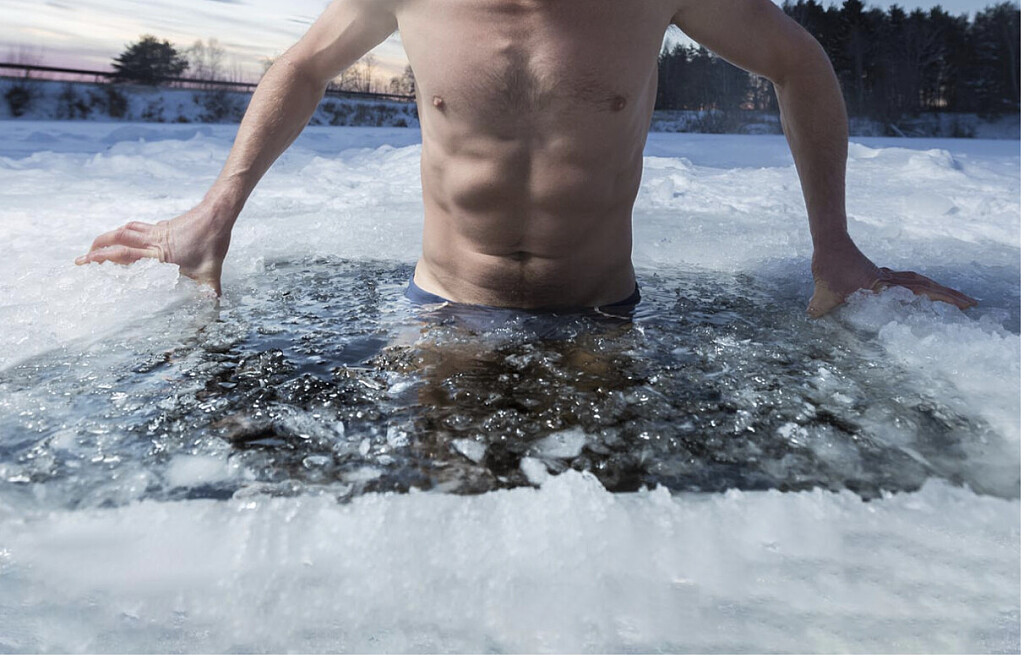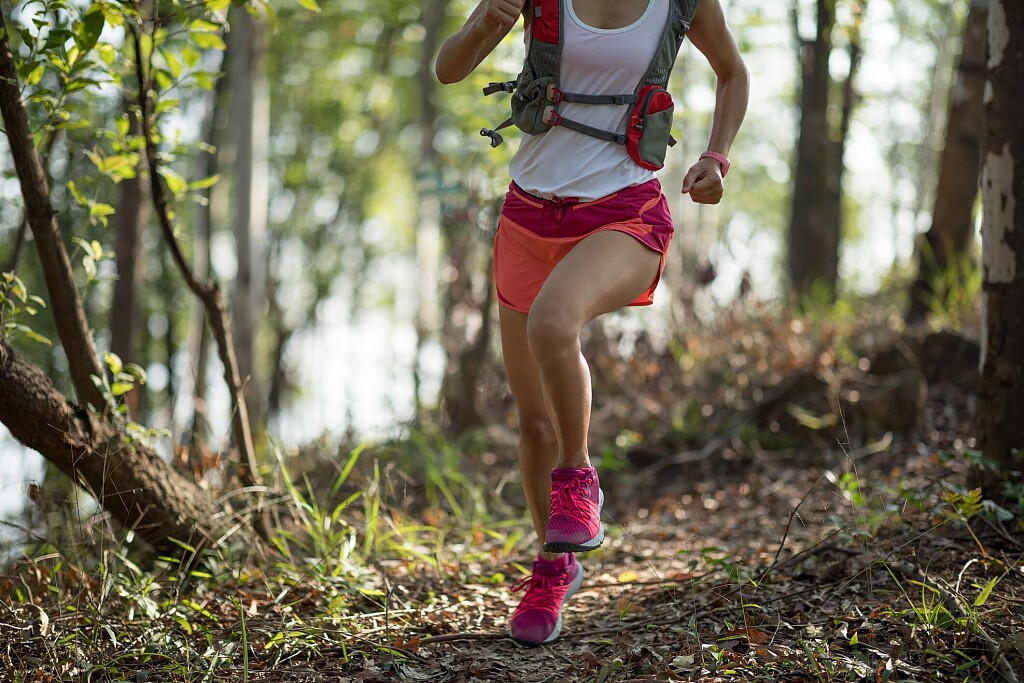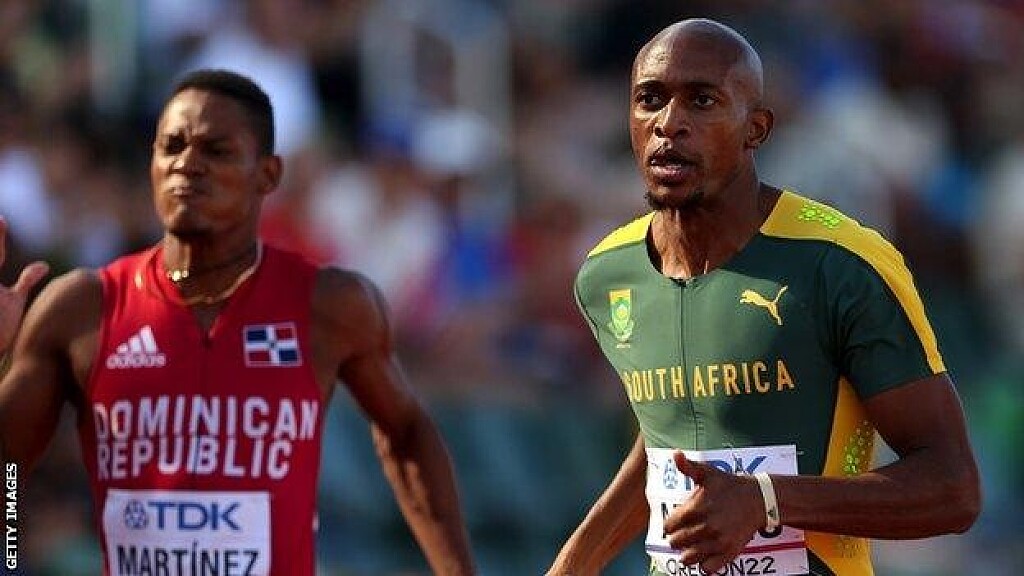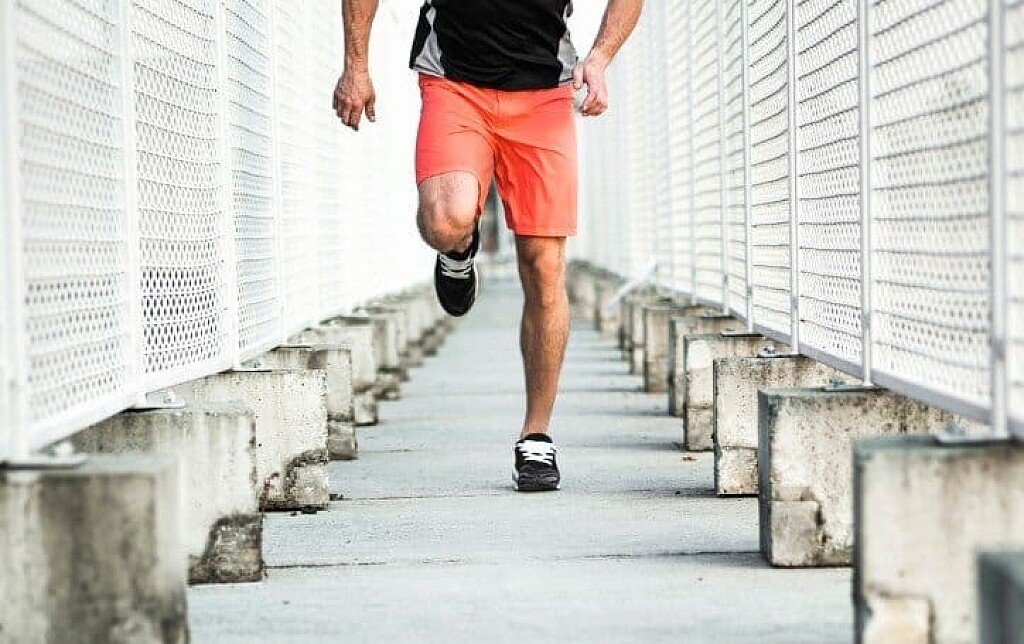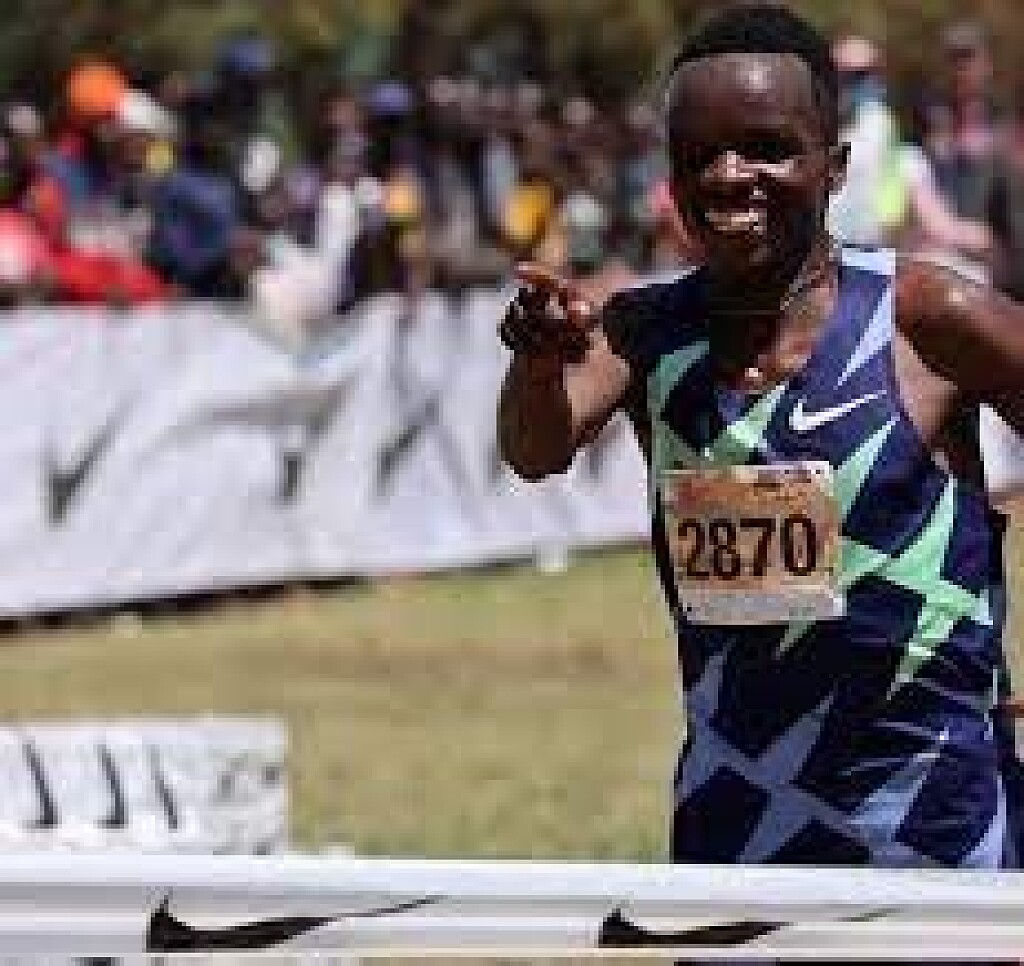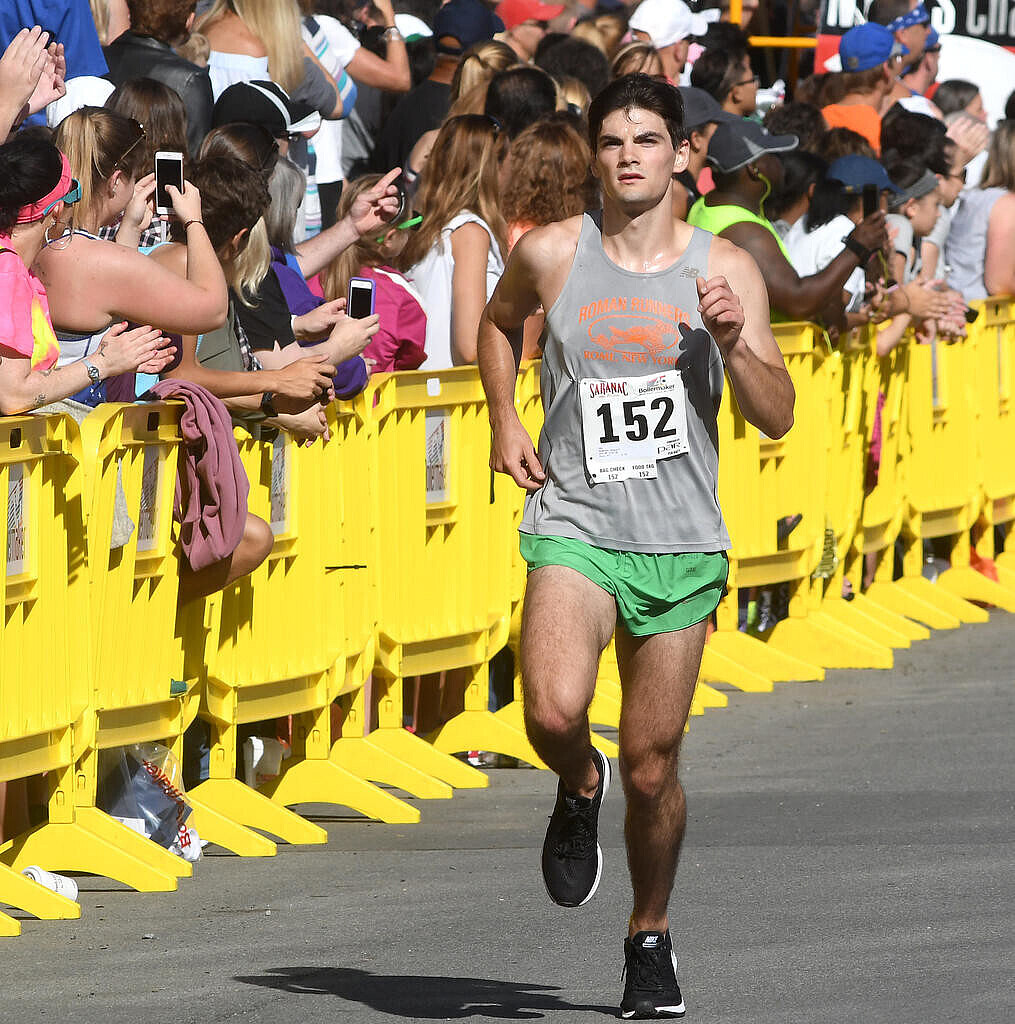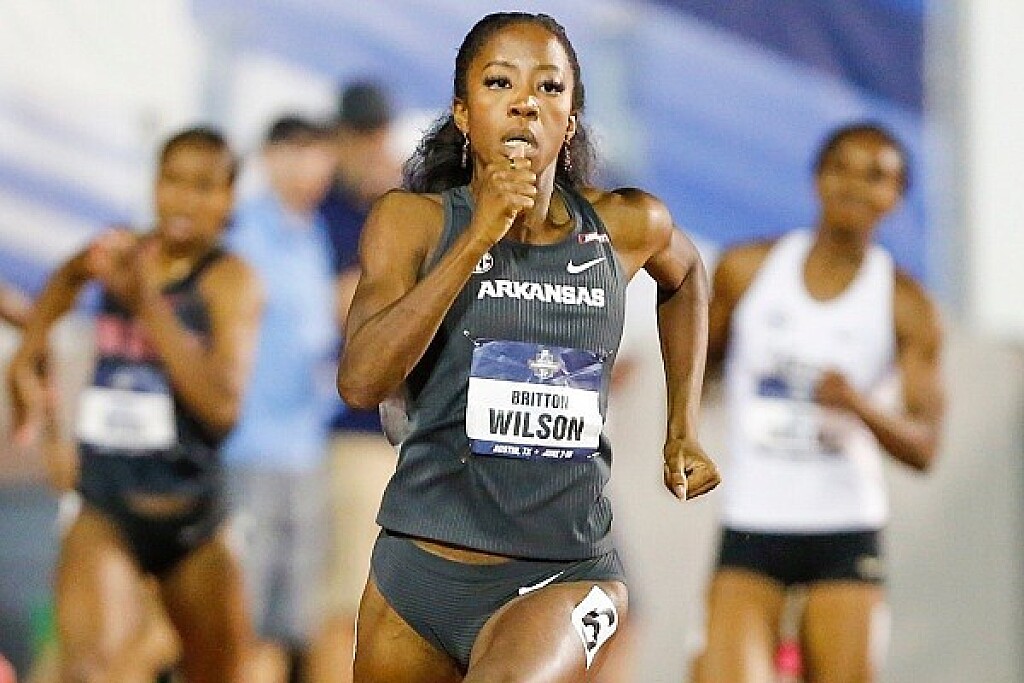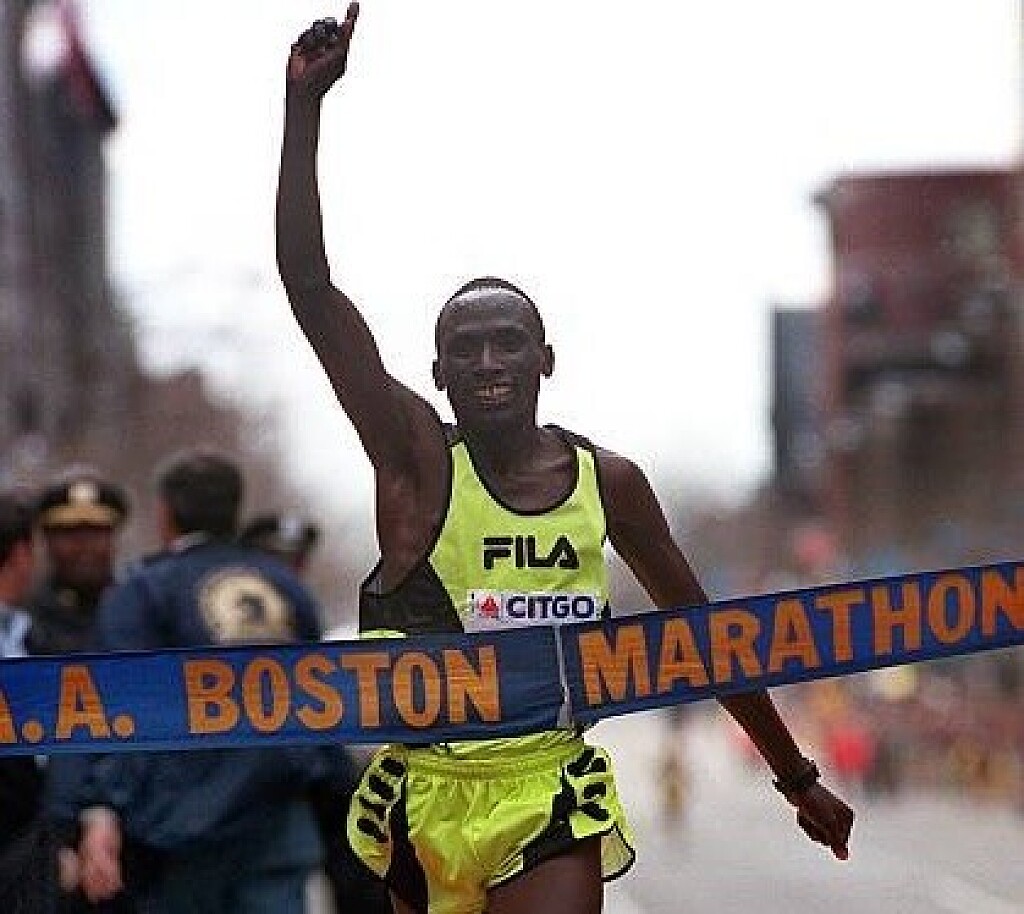Running News Daily
Top Ten Stories of the Week
7/15/2023
These are the top ten stories based on views over the last week.
Ice Plunges/Cold Baths for Muscle Recovery
The old adage goes “no pain, no gain,” and no crowd knows that better than long distance runners do. It’s the philosophy their entire sport is predicated on, pushing through the pain for hundreds of miles each month over hills and on concrete in the pursuit of athletic success.

With grueling training methods comes a pressing need for improved methods of recovery. If you don’t give your muscles time to repair the microscopic tears that develop during strenuous exercise, you aren’t going to become a better athlete. Instead, you’ll end up with strained muscles and time away from sport that could otherwise be devoted to making gains.
Sensitive tissues like tendons and ligaments are similarly important to safeguard, as repetitive stress injuries are a massive concern in a sport where you’re going to be covering long distances.
One way of recovering after a workout that’s gaining increasing popularity is the use of cold plunges to spur muscle repair. This can take a number of different forms, from soaking in a cold bath replete with ice water for five to ten minutes after a workout to the expensive cryotherapy technologies used by high profile athletes (although as this is becoming more popular, it will likely be more accessible to the general public in the near figure as demand increases and technology improves).
Many former Boston Marathon winners have incorporated cold plunges into their daily routines. Two-time Boston Marathon winner Meb Keflezighi, Desiree Linden who won the Boston Marathon in 2018, and Kara Goucher who has competed in the Boston Marathon ten times. These runners all say that ice baths help them to reduce muscle soreness and inflammation, and to feel more refreshed and ready to train the next day. They typically do ice baths for 10-15 minutes after their hardest workouts or after the marathon itself. A BetMGM Massachusetts bonus code will come in handy for anyone looking to get in on the action in the next Boston Marathon. The 2023 New York City Marathon will be held on Sunday, November 5, 2023, and you can bet many runners are using ice plunges ahead of the big race (and most certainly after they’re done running) for muscle recovery.
Here’s a look at why cold plunges are all the rage these days, including how to take one for maximum effect and the numerous advantages of exposing sore muscles to chilly temperatures.
Part of the beauty of ice water therapy is that you don’t have to be rich to have access: anyone with a shower or bath can turn the tap to the lowest temperature setting and sit in the water for up to ten minutes following a workout.
What’s the benefit, though? It comes down to basic science. Exposure to (relatively) freezing temperatures makes your blood vessels contract as your body pulls in heat to your core to keep you warm. This could reduce swelling and inflammation, and doing so immediately after a workout could give you a jumpstart on post exercise soreness because of that.
Once you step out of the ice bath, the reverse process happens as your muscles warm up in the outside air and your blood vessels begin to dilate again. This circulatory rush kick starts the process of muscle repair, bringing vital nutrients to where they’re needed most.
One thing that’s important to note, though, is that the advantages of an ice bath can change quite a bit depending on the type of exercise you’re pursuing. Endurance runners have a much different set of goals than a powerlifter or anaerobic sprinter does, so this article doesn’t apply to everyone. Endurance runners engage in aerobic activity, plateauing at 80 to 90 percent of their maximum output for extended periods of time (although they may need a quick burst to finish a race or pass a competitor).
Sprinters and lifters deploy massive bursts of all their energy in one go, and as such they have different recovery needs: it’s critical to cool down properly after engaging in strenuous exercise so that you don’t expose yourself to cold temperatures before you’re ready, causing muscles to tense up.
(07/07/23) Views: 192Four ways hitting the trails can benefit road runners
Nothing rouses a runner’s self-discipline quite like training for a road race. Whether it’s preparing for a 5K or a marathon, getting in the best possible shape for the big event usually means setting a clear training schedule and sticking to it.
While challenging oneself to stay fully committed to a plan during weeks and months of tough sessions has a certain appeal, becoming overly obsessed with hitting every target on the calendar can turn training into a mental and physical grind. As road-race training plans tend to focus exclusively on road and track work, the lack of variety in sessions can make training feel even more taxing.

Adding the occasional trail run to a road-race training schedule can be a great way to keep training fresh without having to sacrifice crucial road or track sessions. You can tuck a trail run seamlessly into an existing training plan by scheduling it on a dedicated easy-run day, or on days when the schedule gives the option for either a rest day or an easy run. However it best fits best into the schedule, here are four reasons road runners may want to consider taking the odd trip down the trail.
1.- Enhanced stability and strength

Navigating hills, rocks and uneven terrain on trail runs forces runners to engage a wider range of muscles, including those in the glutes, hips and core, which are often neglected during road running. Further developing these muscles can help runners enhance stability, power and injury prevention–benefits that can reap rewards as runners progress in their road training.
2.- Reduced impact on joints
Trails generally have softer surfaces, such as dirt or grass, which reduces the impact on joints and can help prevent injuries like shin splints. A recent study found adding too many fast kilometres too quickly, as can happen in speed-focused road and track sessions, is more likely to lead to tibial stress fractures than taking on the steeper, slower climbs associated with trail running.
3.- Improved aerobic fitness
The generally slower pace of trail running lends itself to training at an easier effort, which can strengthen aerobic capacity. Training in the aerobic zone can help increase the body’s ability to take in, transport, and use oxygen, leading to improved running performance and greater endurance capacity.
4.- Greater mental stimulation
The changing scenery and the need to focus on the trail can offer a mental escape from the monotony of running only on the road. It can be an engaging and exciting experience that helps alleviate boredom and keep the mind sharp. Trail running allows you to explore new areas, discover hidden gems and become immersed in nature’s beauty.
(07/07/23) Views: 114Paul Baswick
Higher VO2 max may protect against certain cancers, study shows
Men might be able to boost their protection against certain types of cancer by running or engaging in other forms of cardiovascular exercise, according to a new study. Researchers from the Swedish School of Sport and Health Sciences have linked cardio-respiratory fitness to a lower risk of dying from prostate, colon and lung cancer—the three most common types of cancer in men.
For the study, researchers pored over 10 years of data from 177,709 Swedish men ranging in age from 18 to 75, with the objective of determining how various levels of cardio-respiratory fitness might offer protection against contracting or dying from these specific cancers. Participants were ranked into four groups, from lowest to highest cardio-respiratory fitness.

After measuring participants for VO2 max—the maximum amount of oxygen your body can use during dynamic exercise—the researchers found those with higher VO2 max had a significantly lower risk of dying from prostate, colon and lung cancer. They also found that those with a higher VO2 max were at lower risk of developing colon or lung cancer; that data did reveal a slightly higher risk of developing prostate cancer among this group, however.
While this latest study is unique in its examination of how higher fitness levels can curb rates of certain cancers in men, it adds to a growing list of research linking cardio-respiratory fitness to lower cancer risks. Previous studies have associated exercise with lower rates of stomach cancer as well as lower rates of cancer among girls.

Recent studies have also linked regular physical exercise to other aspects of health and well-being. A study published by researchers in the United States and Mexico earlier this year, for example, found that sticking to a regular running regimen throughout middle age may help prevent or slow memory loss associated with getting older.
Research has also shown that reaping the health benefits of a more active lifestyle doesn’t require a huge investment in time or energy. A report published by the American Heart Association last year showed adults needed only 21 and a half minutes of vigorous exercise—defined as running, walking, bicycling or swimming—a day to lower their risk of premature death.
(07/07/23) Views: 104Paul Baswick
South African sprinter Luxolo Adams:I want to use Oregon experience in Budapest
South African sprinter Luxolo Adams has said he will be leaning on the 'overwhelming' experience at last year's World Championships in Oregon ahead of this year's showpiece in Budapest.
Adams has been working on his 'mental fitness' after making a maiden appearance at the global show in 2022 where he reached the semifinals of the 200m.
Speaking to the BBC Sports The Warm-Up Track podcast, the 26-year-old said: "Now I know how the world class meet operates."

"I know how to execute my races. Now, when I'm standing in the lane with with a Noah Lyles, I know how to manage my stress levels, I know how to manage all the influences around me. I've got enough experience in store," Adams said.
Adams was the fifth fastest man in the world last year after winning the Paris Diamond League meet. The sprinter has already qualified for Paris Olympic Games.

"Mentally, it was challenging, because it was my first World Champs," he said. "Two or three weeks before, there was a visa issue. Days went by and then we got closer to the meet and we [still] don't have visas.
"We managed to get waivers but when I got there, it was a different type of environment for me. I couldn't know how to interact, I didn't know how to, to move around, and also how to behave because now it's a different type of meet. It's a world class.
"It was overwhelming. I don't know what I was going through but one thing was in my mind: God is not going to place me in a sport whereby I don't have the power or the strength to go through.
(07/07/23) Views: 103Evans Ousuru
Sha’Carri Richardson runs 100m world lead at U.S. Track and Field Championships
On the first day of the USATF Track and Field Championships in Eugene, Ore., U.S. sprinter Sha’Carri Richardson made a triumphant comeback, leaving spectators in awe as she blazed to a 100m world lead. Richardson set a new personal best and the fastest women’s 100m time of the year, clocking an impressive 10.71 seconds (+0.1 m/s).
During the heats of the women’s 100m on Thursday evening, Richardson delivered an outstanding performance, winning the first heat and securing her spot in Friday’s semi-finals. Her time not only surpassed her competitors by a significant margin but exceeded the previous world-leading time of 10.75 seconds set by Marie-Josee Ta Lou of Ivory Coast at the Oslo Diamond League just a month ago.

Richardson’s achievement was even more remarkable as she improved her best by one-tenth of a second from her previous record of 10.72 seconds, set in 2021 at the Miramar Invitational in Florida. Her new personal best now ranks as the sixth-fastest 100m time in history and the fourth-fastest ever by an American woman.
As anticipation grows, Richardson advances to the 100m semi-finals and ultimately aims for a spot in the final, scheduled for Friday evening. The stakes are high, as the top three U.S. sprinters in these races will earn the privilege to represent Team USA at the 2023 World Athletics Championships in Budapest next month. With her exceptional performance, Richardson is undoubtedly a strong contender for one of those positions.

Richardson’s journey hasn’t come without obstacles. Following her victory in the 100m at the 2021 U.S. Olympic Trials, she faced a ban and disqualification due to a positive cannabis test, causing her to miss the delayed 2020 Tokyo Olympics. In 2022, she also faced challenges, failing to reach the final in the 100m and 200m at the U.S. Championships and missing out on qualification for the 2022 Worlds team.
The 2023 USATF Track and Field Championships are taking place from July 6 to 9 at Hayward Field in Eugene, Ore
(07/07/23) Views: 101Running Magazine
Crush your summer 5K with this broken kilometer workout
It’s summer, and the perfect time of year to lower the mileage a little and work on improving your 5K speed. Whether you’re a seasoned runner or just starting out, aiming to improve your speed can add an exciting thrill to training. The best thing about working on your 5K speed is that it’ll pay its dividends when training for longer distances. 5K training is all about stepping outside your comfort zone and getting familiar with faster paces, so challenge yourself, lace up your running shoes and make this summer 5K your fastest yet!
One of the most well-known workouts to improve your 5K is one-kilometer repeats, but they can become tedious or repetitive. Instead, try breaking down a kilometer into shorter intervals with brief recovery periods in between, to hit paces and put a fun twist on things. This type of workout provides an opportunity to practice pacing strategies, mental toughness and the ability to maintain a strong pace during moments of fatigue to help you feel more confident on race day.
The workout

Five to six sets of 600m, 400m with 30 seconds rest between reps and 90 seconds rest between sets
Before you get started, do a 10 to 15-minute easy-jog warmup with a few dynamic stretches.

This workout should be done at your goal 5K pace, or just a little faster. For example, if you are looking to break 20 minutes for 5K, try to do the 600m reps at 3:55-4:00/km pace and the 400s at 3:55/km or faster.
The key to this workout is hitting paces and getting comfortable being uncomfortable. The short, 30-second rest is there to give you a quick breather, but to keep you on your toes for the next rep.
Incorporating workouts like this into your training can enhance your 5K performance and ultimately boost your confidence, and your performance, on race day.
(07/08/23) Views: 101Marley Dickinson
Daniel Simiu and Nicholas Kimeli secure tickets to World Championships after scintillating display
Commonwealth Games 5,000m silver medalist Nicholas Kimeli and Commonwealth Games 10,000m silver medalist Daniel Simiu have secured their tickets to the World Championships in Budapest, Hungary after taking the 1-2 positions during the ongoing National Trials at the Nyayo National Stadium.
A pack of more than 10 athletes braved through the chilly afternoon with the hope of making the cut to the national team but only the duo managed to be selected successfully.
Among the pack were some of the top 10,000m stars, including Kibiwott Kandie, Simiu and Bernard Kibet. After five laps, Kibet of Central Rift was looking comfortable leading the pack which was still intact.

Kimeli and Simiu overtook Kibet to take third place but after 4,000m, Kandie took the mantle as he crossed the mark in 11:08.00. At this point, the pack had started dropping off and Weldon Langat and Hillary Kipkoech were trailing.
The unpredictable race saw Kimeli take the mantle after 6,000m and he was now looking comfortable with Simiu following closely behind him. Shortly after, Simiu overtook Kipkorir after 16 laps but his reign was short-lived as Kipkorir took over again.

After 17 laps, the leading pack now consisted of six athletes both looking poised and ready for title contention. The race would become a battle between Kandie, Simiu and Kimeli with Kibet following closely.
With one lap to go, Kimeli was still leading the trio and with the finish line in sight, he unleashed a finishing kick to outshine Simiu and Kibet. He crossed the line in 27:20.84, unofficial time.
In a post-race interview, he expressed excitement to have won the race and noted that he might opt to double in both the 10,000m and 5,000m since he had a wild card in the 12.5 lap-race.
He said: "We urge Kenyans not to lose hope in us because something good will come home. They should keep us in their prayers. We are okay in endurance and we have to improve on our speed."
(07/07/23) Views: 98Abigael Wuafula
Rome’s Hoffman aims for personal best in Boilermaker 15K
Nine times Jordon Hoffman has finished in the top 100 at the Boilermaker Road Race 15K. This year, the 31-year-old Roman is aiming for a personal best — a time under 50 minutes.
The member of the Roman Runners was 10th in the 2021 race, which was a rare opportunity for local runners to achieve top finishes because the elite runners were not there for the first in-person version since the COVID-19 pandemic started. But his best time was 50:39 in 2015.
“I think I’m in pretty good shape this year. I definitely feel — based on past races I’ve done — to do what I want to do this year,” said Hoffman. He said he’s been “getting in as many miles as I can with my work schedule and racing at local races for my speed workouts.” This year his preparations have been a little different because he was training for his first Boston Marathon. That result was a time of 2:48:19, good for 1,521st overall. “I’m extremely happy. A marathon is not really my type of race that I want to go fast at. I don’t think my body is built for that.” He said it was also a learning experience and a new challenge to learn that course.

He won the 35th annual Fort to Fort 10K in Rome in early April in a time of 33:03. That was a couple weeks before Boston.
Hoffman said he’s prepared for rain, which the forecasts show could show up. He runs in the rain as a way to prepare for less-than-ideal race day conditions. It also rained in Boston, he noted.

As for the course’s challenges, “Typically the toughest part for me and the only part I dread of that entire course would have to be Burrstone Road up to Utica University. It’s not even a tough part but that steady incline there always kicks my butt.”
Then there’s the one new factor that’s been threatening to outright cancel the race: dangerous air quality levels. “If it’s bad Sunday it could make things tougher,” he said. “No matter how I feel that day,” if the air is not good, “I’m not going to push myself to potentially harm myself.”
One thing he has to help is moral support. Hoffman has a few cheering sections along the course. His mother and sister are always watching from near the finish line. Other family members are stationed around mile five and there are more around Utica University.
“It’s always a good year, a good time for it,” he said of the race. “It’s an exciting thing to see people from all over coming to Central New York for one of the best known 15Ks in the U.S.”
(07/08/23) Views: 91Steve Jones
U.S. sprinting phenom Britton Wilson turns pro with Adidas
One of the top rising stars in the NCAA has turned pro and signed a professional contract with Adidas. On Monday, the record-breaking 400m sprinter Britton Wilson announced her decision to turn pro on Instagram after her second-place finish to Sydney McLaughlin-Levrone at the 2023 USATF Track and Field Championships, earning a qualification spot for the 2023 World Athletics Championships next month.
“Turning pro has been one of my lifelong dreams,” Wilson wrote on Instagram. “Through all of the hard work and sacrifice, I truly manifested this surreal and special moment every day on the track, in the weight room, and while training. Here I am, beginning my professional track and field career with Team Adidas.”

Wilson’s clocked an impressive time of 49.79 seconds at USATF Track and Field Championships, marking the seventh time she’s gone under the 50-second mark this season. She is the second American this year, only behind McLaughlin-Levrone’s 48.74 world lead from USA’s.
Like McLaughlin-Levrone, Wilson is a versatile athlete who can excel at both the 400m and 400m hurdles. She has achieved personal bests of 49.13 seconds in the 400m and 53.08 seconds in the 400m hurdles. In May, Wilson surprised track and field fans when she pulled off an NCAA record-setting double at the SEC Outdoor Track & Field Championships.

Wilson’s success story extends over the past 18 months, during which she achieved remarkable milestones. In 2022, she played a pivotal role in securing the NCAA 4x400m indoor title alongside her Arkansas teammates. Subsequently, she clinched an individual victory in the 400m hurdles at the NCAA outdoor championships. Her exceptional performances led her to qualify for the 2022 World Athletics Championships in Eugene, where she contributed to the American team’s gold medal triumph in the 4x400m relay event.
As Wilson sets her sights on the upcoming World Athletics Championships in Budapest, she will further strengthen the already challenging competition in the 400m and 400m hurdles events at the global level.
(07/11/23) Views: 89Marley Dickinson
Past winner of Boston, New York Marathons dies at age 52
Joseph Chebet is being remembered by Athletics Kenya as a legend "who brought fame to our country"
Kenya’s Joseph Chebet, lauded for helping to bring his country into the global spotlight after winning both the New York and Boston marathons in 1999, died Friday at age 52.
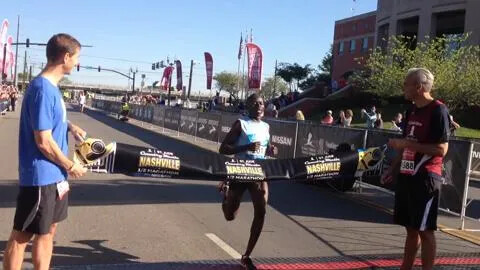
Chebet died after being hospitalized for three days in the city of Eldoret, about 200 kilometres northwest of the Kenyan capitol of Nairobi (and one of the centres of running culture in Kenya) following a short illness, his brother Ben Chebet told Kenya’s Daily Nation.
“We have lost an icon,” Athletics Kenya President Jackson Tuwei said in a statement following Chebet’s death. “He was one of the legends who brought fame to our country. I want to send my condolences to the family, friends, colleagues and athletics fraternity for their loss.”
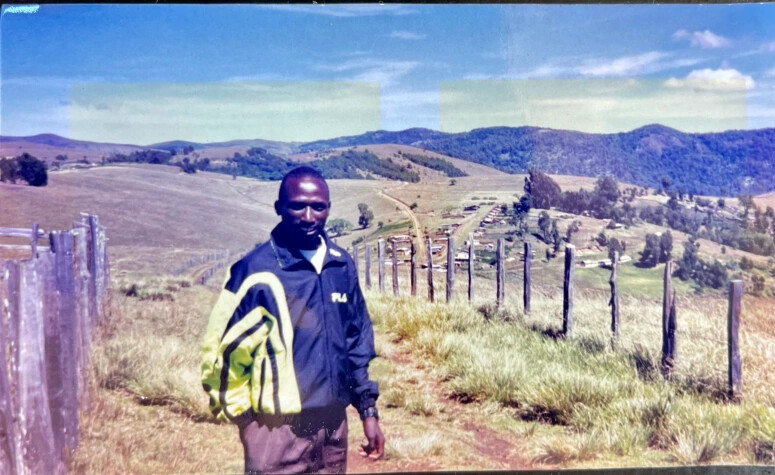
Fellow Kenyan runner Moses Tenui, who won the Boston Marathon in 1996 and 1998, offered his condolences, as well as his memories of Chebet as a fierce competitor. “Chebet was a good athlete and he would fight to the finish line,” he told the Daily Nation. “I remember in Boston Marathon in 1998, I ran with him to the finish line where I managed to beat him with three seconds. It’s sad that we have lost him and I want to send my condolences to the family and friends during this difficult moment. It’s not easy to lose a loved one.”
Chebet’s three-second loss to Tenui in 1998 kicked off a frustrating and disappointing year for Chebet, who would again lose a major marathon title by a mere three seconds, this time to fellow Kenyan John Kagwe at the New York City Marathon.
Chebet rallied the following year, however, running 2:09.52 to win Boston and 2:09.14 to top the podium in New York. He bookended those 1999 career-highlight victories with wins at the Amsterdam Marathon in 1996 (2:10:57) and at the Vienna Marathon in 2003 (2:14:49).
Also joining in offering their ondolences was Kenyan Sen. Allan Chesang, who praised Chebet for his humility. “We will always remember his victories. He was a blessing to our Nation during his life. He served diligently and with humility as an officer in the Police force. His contribution to our nation will endure forever in our Hearts,” Chesang tweeted Friday.
Following his retirement from running, Chebet took up farming in the Kenyan town of Kapyego.
(07/10/23) Views: 87
Running Magazine


